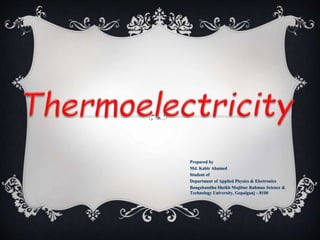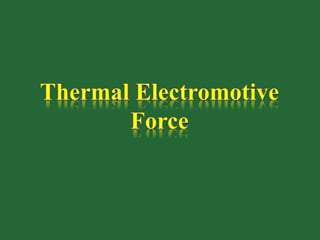Thermal electromotive force (EMF) is generated when dissimilar metals touch, creating a small voltage. The thermoelectric effect directly converts temperature differences into voltage and vice versa. Specifically, the Seebeck effect produces a voltage when two different conductors or semiconductors have a temperature difference at their junction, proportional to the temperature difference. This physical principle is used in thermocouples for temperature measurement. The Peltier effect involves heating or cooling at the junction of two conductors when an electric current passes through.










